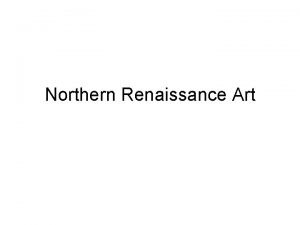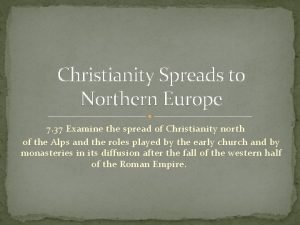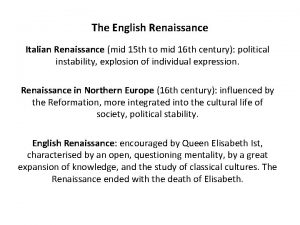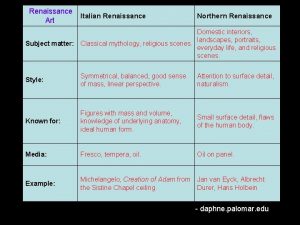Italian Renaissance Art The final era of Italian





- Slides: 5

Italian Renaissance Art • The final era of Italian Renaissance painting (1490 to 1520) is known as the High Renaissance. • Leonardo da Vinci mastered the art of realistic painting and sought to advance to idealized forms of nature and humans. • Raphael was a well known artist for his paintings of the Madonna. His works reveal a world of balance, harmony, and order. • Michelangelo was a painter, sculptor, and architect. His depictions of idealized humans are meant as a reflection of divine beauty.

The Northern Artistic Renaissance Northern European artists, especially those in the Low Countries, portrayed their world realistically but in a different way than did the Italian artists.

The Northern Artistic Renaissance (cont. ) • Artists in the Low Countries (today’s Belgium, Luxembourg, and the Netherlands) also sought to portray their world realistically. • As opposed to Italian artists who perfected their work on the large, open spaces of Italian churches, Northern European artists painted on much smaller canvases. • One of the most important art schools in northern Europe was in Flanders, one of the Low Countries.

The Northern Artistic Renaissance (cont. ) • Artists such as Jan van Eyck were among the first to use and perfect oil painting. • Artists from northern Europe, such as German Albrecht Dürer, traveled to Italy to study the Italian standards and laws of perspective.

What was the significance of Jan van Eyck’s use of oil paint? A. Oil was cheaper to use. B. Oil paints were available to everyone, not just Italians. C. Oil allowed for the use of more color. D. Oil allowed artists to paint anywhere. A. B. C. D. A B C D









